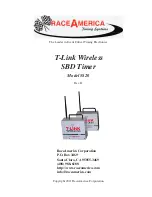
Enter Sight Height:
Sight height if the distance from the center of the bore to the center of you sight. If you're
just playing around, use the default of 1.5" . However if your making a "for real" field drop
card do it right and measure the thing (a pain in the back side). If you're using an iron
sight gun (particularly handguns) don't use the 1.5" number at all. It's so far from your
gun that the resultant trajectory data will be pretty bad.
Maximum Point Blank Range:
The Ballistic Calculator now has all the data it needs for the trajectory calculation. You'll
now need to tell the Ballistic Calculator what sort of zero you want. If you select the MAX
PB RANGE the Ballistic Calculator will find the maximum range at which you can fire the
gun without the bullet traveling more than so many inches above or below the line of
sight.
This option is strongly recommended for field marksman (hunters and warriors). The
default value is a six inch "vital zone." This means that you'll end up with a zero that
keeps the bullet within an imaginary six inch tube (three inches above to three inches
below the line of sight) from the muzzle to the maximum "point blank" range. The
Ballistic Calculator will tell you where to zero at 100 yards for this and print a drop table
according to that zero.
Specific Range:
The second option of SPECIFIC RANGE is of use to target shooters. If your local range
only goes to 100 yards but your competition is at 500 yards you can have the Ballistic
Calculator figure out where to set your gun at 100 to be dead on at 500. Again it will print
you a drop table based on that zero. One neat trick we added to this zero option is the
ability to offset the zero. Normally when the Ballistic Calculator asks you if you want an
13


































